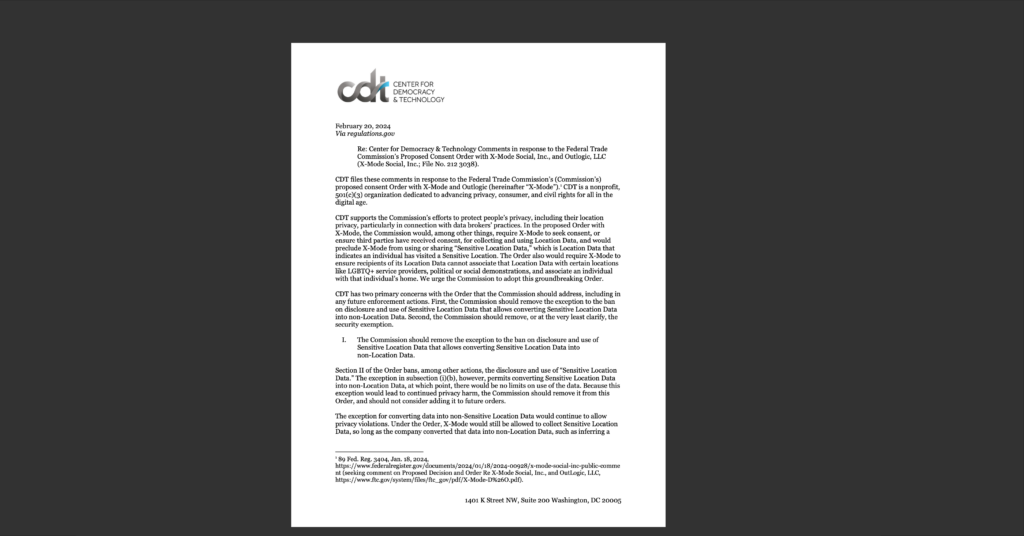Comments to the United Nations on the Global Digital Compact
The Summit for the Future has many elements, and a disproportionate amount of the attention falls on the GDC and its call for States to actively engage in the process of internet governance, as I noted in my presentation to the recent United Nations proceedings. Despite the attention, some UN agencies and UN Member States alike may be confused at what they can and should do as a part of the process of governing the internet. Perhaps we should reframe the question. Instead how can multilateralism shape the internet, how can multistakeholder internet governance help shape the future of multilateralism?
Nation-states’ engagement in the process so far has been uneven. We’ve seen especially in the WSIS+10 review, which of course happened during a different time. Ten years ago States were largely stepping back and companies were eager to step up, across jurisdictions and markets. Even the US stepped back from its unilateral control over the internet with the IANA transition that completed around the same time.
Most of my views are shaped by the way internet standards and standards for emerging digital technologies are developed. The key purpose behind these standards being set in multistakeholder spaces is to encourage technologies to play together nicely. This interoperability is an essential architectural feature of the internet. This approach is not always easily translated to other technologies. We know, for example, that there are standards for things like electrical sockets and shipping containers that differ from place to place. Multiple standards exist, yet we still use them even though they are incompatible. On the internet, having multiple standards does not always work well.
This approach also informs my views on AI standardization. As an exercise, I encourage everyone thinking about AI to mentally replace the words “artificial intelligence” with “data-driven methods” or “software”. This helps us think more concretely about exactly what we’re talking about. In this case, I think we are speaking about a kind of “software,” and it is indeed really important to discuss the norms and guardrails for software like AI that is largely data-driven, consequential to people’s lives, and above all impossible without the internet. However, it is unlikely that technical standards are needed: These systems have no real cause to embrace the notion of interoperability, and until now, most companies have relied upon the proprietary nature of their algorithms to hone their competitive edges.
But human rights are not wall plugs and shipping containers. They must apply across the board and across technologies. Thus, we need to make decisions about them collectively, as with internet standards, and profits and economics must be balanced against human rights. The human rights framework is clear, it is actionable, and most importantly there are global governance mechanisms to ensure that States are meeting their HR obligations – and by extension, for corporate entities to meet their HR responsibilities as set forth in their individual national frameworks. We can’t leave the future of the global internet to companies alone, since true multilateralism requires it. States must be involved, and they have to work together. The Global Development Compact provides a mechanism.
As I mentioned at the beginning of this piece, perhaps this process can serve to strengthen UN multilateralism more broadly, bringing the internet model to other questions beyond the technical. States’ involvement in a truly multistakeholder process could provide a model for solving other problems in other areas. To get started, all the various countries have to do is step up, embrace it, and do their part to build the internet we truly need as a global community. We should welcome this renewed effort to engage.
States have roles that are unique. The continue and enhance engagement in all the mentioned governance processes and ensuring the protection of human rights by helping to strengthen the existing multistakeholder ecosystem of internet governance. They are uniquely placed to solve issues of access, censorship, encryption and weapons of war. They are also the actors who can extend the multistakeholder model to reach within and evolve the multilateralism of the UN itself.


